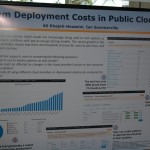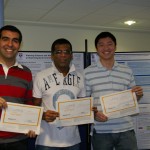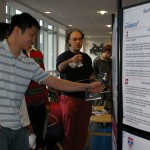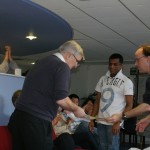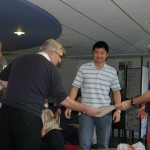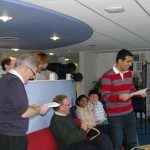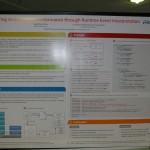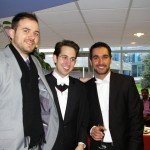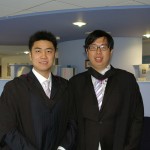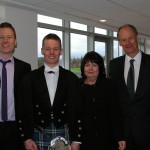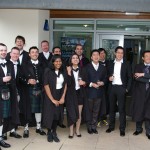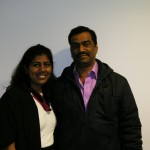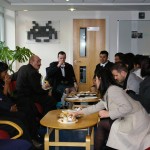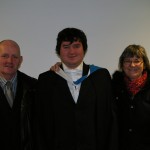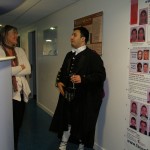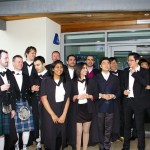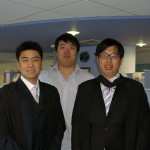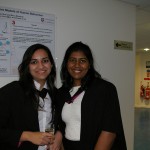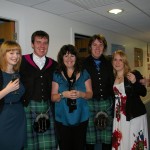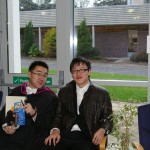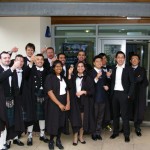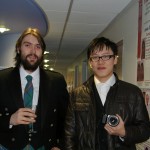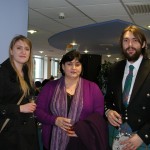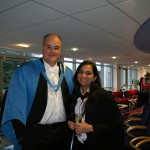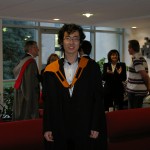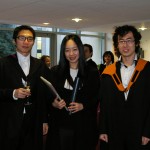The PhD poster session took place today in the Jack Cole coffee area.
Ron Morrison awarded Amazon vouchers to the three best posters. Congratulations to Lakshitha, Yi and Ali.
3rd place to System Deployment Costs in Public Clouds – Ali Khajeh-Hosseini
2nd place to Building Energy Awareness into ICT Systems (complete with magnifying glass) – Yi Yu
1st place to Monitoring Architectural Conformance through Runtime Event Interpretation – Lakshitha De Silva
Many of the posters featured at this session, including all the prizewinners, are now available for everyone to look at.
Competition entrants included:
- Jan de Muijnck-Hughes Leveraging Predicate Based Encryption
Systems - James W. Smith Energy Efficiency in Cloud Computing
- CJ Davies Virtual Time Windows − Cross Reality for Cultural Heritage
- John McCaffery Open Virtual Worlds as a Platform for 3D
Application - Ruth Hoffmann Token Passing Networks and Permutation Pattern
Classes - Indika Perera 3D Multi User Learning Environments:
Management Policy Considerations - Ward Jaradat A Scalable Architecture for Decentralised Execution of Data-Intensive Workflows
- Jin Huang Architectural Concerns for Distributed, Self‐adaptive
Systems - Ozgur Akgün Refining Portfolios of Constraint Models with CONJURE
- Masih Hajiarabderkani Adaptive Dissemination of Maintenance
Information in Peer-to-Peer Systems - Jakub Dostal Viewing Distance and Attention Detection in
Multi-Display Environments (MDEs) - Arunas Prokopas Constraint Solver Synthesizer
- Chonlatee Khorakhun Enabling “Internet of Things”
- Luke Hutton Temporal decay of social networking privacy
policies - Bruce Simpson A new approach to multihoming in the IPv6
Internet


